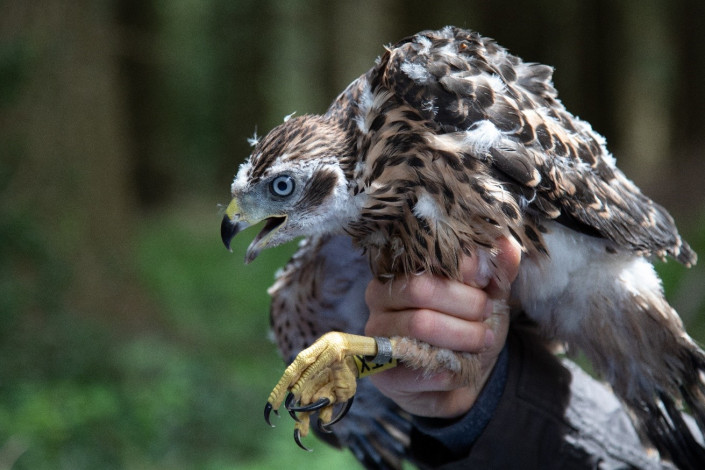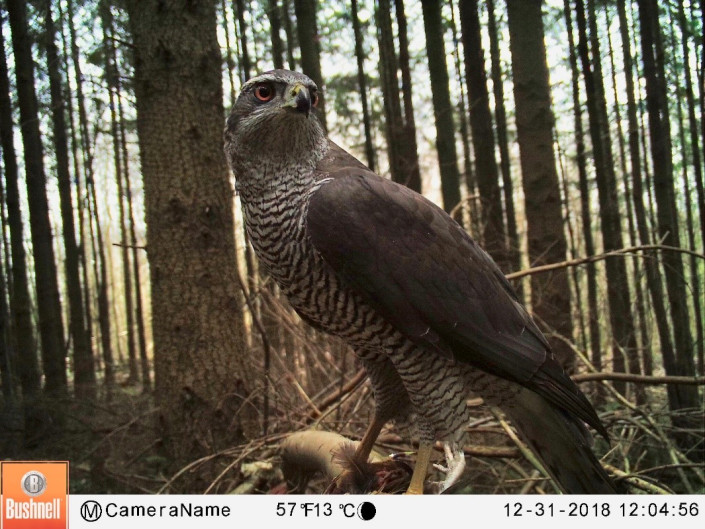GRMG, Raptor Aid and Cirencester Wildlife Group collaboration to install a Peregrine nest box on the roof of St John the Baptist Church, Cirencester.
We are delighted to report that on 18 December 2020 this Peregrine nest box was installed by Raptor Aid in conjunction with GRMG, the Cirencester Wildlife Group and St John the Baptist Church, Cirencester.
GRMG take this opportunity to thank all associated with this project and in particular for the enthusiasm shown by Cirencester Wildlife Group and the church itself.
Cirencester Wildlife Group have set-up a Go Fund Me page for a nest box camera for internet streaming and their target is £1600. If of interest GRMG would be delighted if our supporters might consider donating towards our first ever Gloucestershire Peregrine internet streaming site at the following link;
https://gf.me/u/zcthff
We would also be extremely grateful if you might share this link with other interested parties.
See project timeline below;
On 7th October 2020 the following article was published in the local press;
Cirencester Peregrine Project aims to provide rare viewings
By Joseph Forte (Reporter)
The Cirencester Wildlife Group will shortly be exploring community grants as well as other funding options so locals can have an opportunity to take a detailed look at Peregrine falcons.
Prior to 2020, peregrine sightings in Cirencester were mainly a winter affair, with birds seen circling and occasionally perching on the Parish Church of St. John the Baptist. However, at the end of 2019 sightings started to increase – with one bird even seen calling from the top of the church tower at 8am on Christmas Day.
Reports continued at the start of this year, until Dr Ian Grange (senior Environmental lecturer at The Royal Agricultural University) photographed a pair of peregrines on the church tower during the breeding season.
Those involved with the Cirencester Peregrine Project would later learn that church vergers had also witnessed evidence of nesting activity on the tower.
Sadly, whist sightings continue to be frequent, there has been no evidence of chicks successfully fledging. Which is why a collaborative project is now aiming to give these birds an additional helping hand by providing a suitable nest site and allowing researchers and the public an intimate glimpse of their nesting behaviour.
Historically peregrine falcons have not had it easy. In the post-war period of late fifties and early sixties the environmental impacts of chlorinated hydrocarbons were poorly understood.
Whilst BTO scientists (led by Derek Ratcliffe) were researching the effects of these agricultural pesticides, Rachel Carson’s (1962) classic book Silent Spring brought the issue into the public spotlight.
As well as increasing raptor mortality rates, scientists showed that DDT and other organochlorines caused the thinning of egg shells, which broke during incubation, resulting in the serious decline of raptor populations. The peregrine was fast becoming a rare species all over the country.
These enigmatic birds are still regarded as being of conservation concern in both a European and a UK context, however after suffering at the hands of man for many years, this top predator is now benefiting from protection.
As the population recovers, nesting in urban areas has increased in recent years, with more of these birds moving into our towns and cities, they now epitomise a renewed potential for urban rewilding and our ability to live side by side with nature.
Nest sites in the natural environment, known as eyries, are usually located on grassy or earthen cliff-ledges, quarries or other inaccessible undisturbed locations. However, to a Peregrine, an urban environment bears a surprising similarity to canyons and cliffs, with tall vantage points and the added advantage of artificial light which allows these supreme and adaptable hunters to hunt by day and night. As part of the Cirencester Peregrine Project, Gloucestershire Raptor Monitoring Group will be working with Raptor Aid to construct a suitable nest box, which will be installed later this year.
Peregrines typically lay between 3 and 4 eggs in late March and April, which are incubated by both parents until early May. After hatching, the young chicks are brooded by the female for 2 to 3 weeks while the male brings in food. Once fully fledged the parents will then teach the youngsters to hunt and handle prey in flight – a spectacular sight for all those lucky enough to witness.
Excitingly, the nest box will also incorporate the provision for a camera attachment, which it’s hoped will allow ornithologists, peregrine enthusiasts and the general public an opportunity to take a detailed look at the nesting behaviour and ecology of these charismatic birds of prey.
Since peregrines pair for life, typically living on average for between 5 to 6 years and staying on a territory all year round, it’s also hoped that these birds will become a much-loved addition to Cirencester’s community.
If you would like to find out more about the Gloucestershire Raptor Monitoring Group please visit www.glosraptors.co.uk or follow the group’s activities on Twitter via @glosraptors.
If you would like to find out more about the Raptor Aid please visit www.raptoraid.co.uk or follow their activities on Twitter via @raptor_jimmi
Thank you and Season’s Greetings to all our supporters and volunteers.
GRMG team
19 December 2020



























